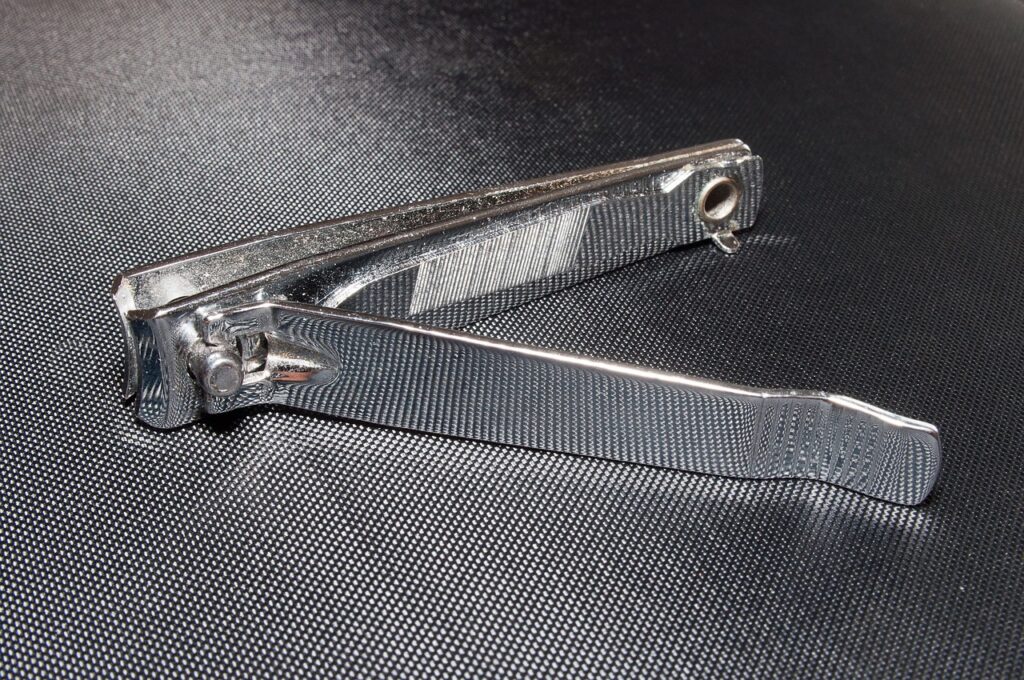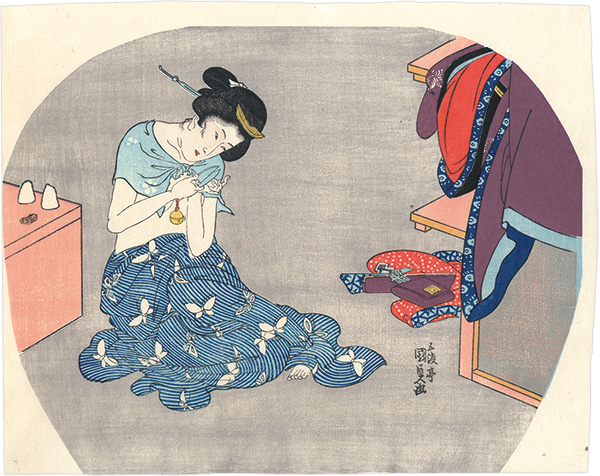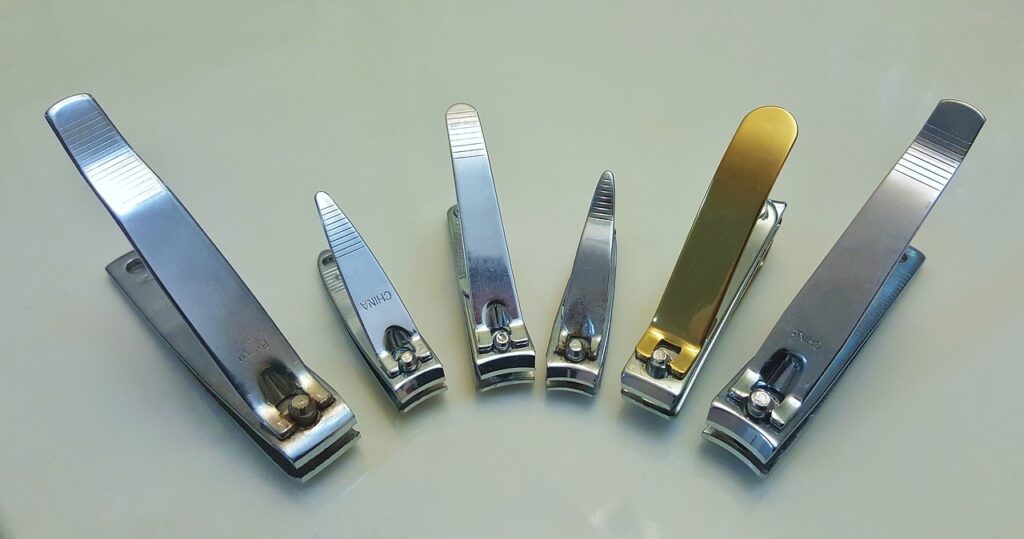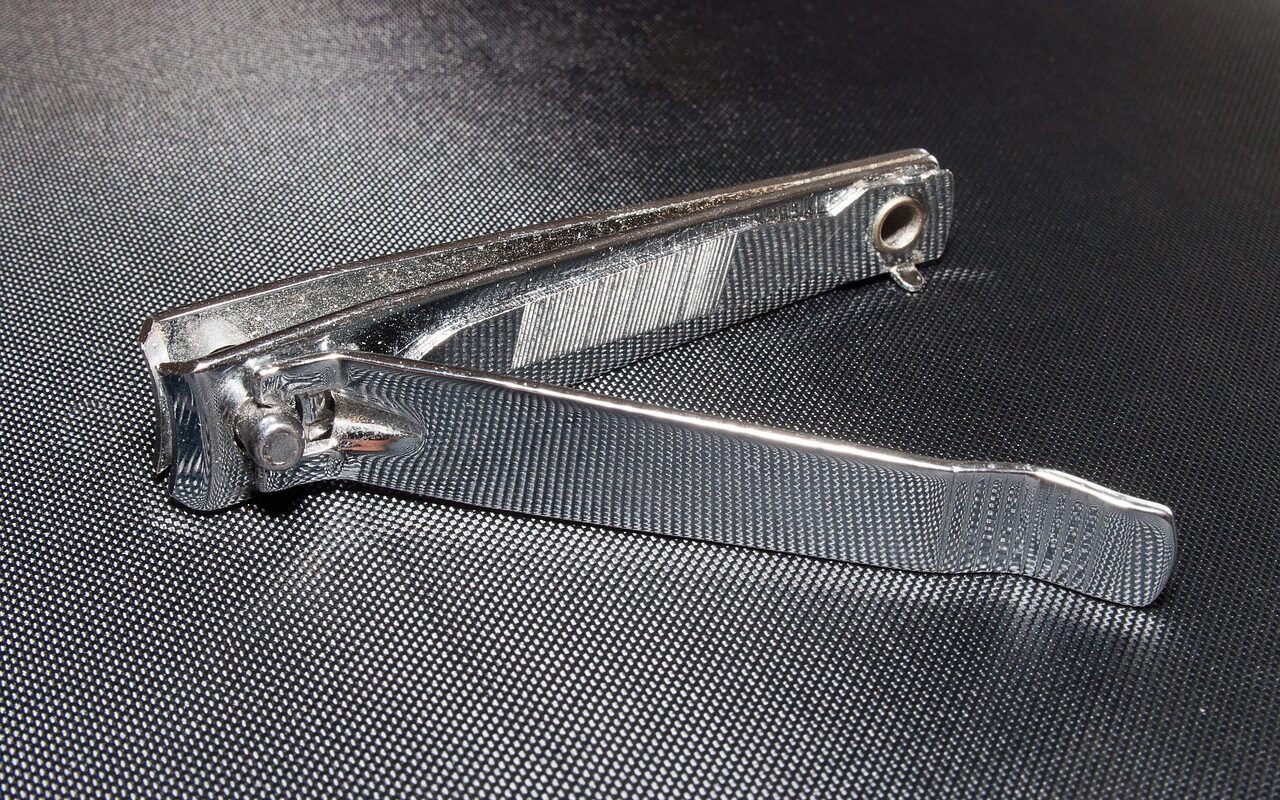Chapter 1: Introduction to Nail Clippers
Many people may not be familiar with nail clippers, an essential everyday item in Japan, so let me introduce them.
Nail clippers have been used for a long time as indispensable items in our daily lives. In particular, Japanese-made nail clippers are highly regarded worldwide for their precision and functionality. While nail clippers are often perceived as simple “nail-cutting tools,” in reality, they have many unique aspects in terms of design, functionality, and manufacturing techniques.
When we trace the history of nail clippers, in the past, people did not have dedicated tools for cutting nails and used knives or stones to trim or peel their nails. However, as time passed and people’s lifestyles and beauty concerns evolved, the importance of nail care increased. Consequently, nail clippers were developed and began to spread as tools to efficiently and neatly trim nails.
The use of nail clippers began to spread in Japan during the Meiji era. Before that, various cutting tools were used for nail maintenance. Traditional Japanese blacksmithing and blade-making techniques contributed to the creation of high-quality nail clippers with very sharp blades.
Notably, Japanese nail clippers are known for their sharpness and durability. Many Japanese nail clipper manufacturers are located in regions known for blade production, where a long history of blade craftsmanship and technology is still alive. This accumulated expertise supports the high quality of nail clippers.
Furthermore, Japanese nail clippers are characterized by their designs that fit comfortably in the user’s hand and curved blades that follow the curve of the nails. Considerable thought has been put into ease of grip, safety, and achieving a beautiful finish.
In conclusion, nail clippers, while essential in our daily lives, have deep historical and technological roots behind their manufacturing and functionality. They are not just simple tools of everyday use but represent an integral part of Japan’s tradition and technology.

Chapter 2: Historical and Cultural Background
Let me tell you about how nail clippers have evolved in Japan along with their historical and cultural context.
While the exact origin of nail clippers remains unclear, people have been caring for their nails since ancient times. Early nail-cutting tools were believed to include items made from stones or animal bones. However, before the emergence of the nail clippers we know today, people used knives and nail files for nail care.
In Japanese history, especially during the Heian period, beauty and personal grooming became highly valued among the aristocracy. During this era, beautiful hands and nails were seen as symbols of refinement and dignity, with special meanings attached to nail length, shape, and color. Growing and shaping nails to perfection became a trend, leading to the invention of various nail care tools.
As we enter the Edo period, the culture of commoners flourished, and nail care became important even among the general population. In this period, beautiful hands and nails were seen as symbols of craftsmanship and the allure of geishas and courtesans. Moreover, Edo-period Japan already had various crafts and technologies, and among them, blade-making skills were highly developed. It is within this context that tools resembling modern nail clippers began to emerge.
Entering the Meiji era, Japan was influenced by Western culture, leading to the adoption of new lifestyles, and the demand for nail clippers increased. During this period, nail clippers that incorporated Japanese design and technology were produced, gradually evolving toward their modern form.
As the 20th century arrived, with the development of mass production techniques, nail clippers became affordable for ordinary households. Japanese-made nail clippers, in particular, gained popularity both domestically and internationally due to their high quality.
In summary, nail clippers have undergone various transformations throughout Japan’s long history. They have been influenced by the changing lifestyles, beauty ideals, and technological advancements of different eras, from ancient aristocratic culture to the flourishing commoner culture of the Edo period, the Westernization of the Meiji era, and the mass production of the 20th century.

Chapter 3: Nail Clippers in Modern Times
Let me introduce what nail clippers are like in modern-day Japan.
Nail clippers are an essential item in the daily lives of people in modern Japan, and they are used in most households. In contemporary Japan, nail clippers have evolved in various aspects, including functionality, design, and portability, offering a wide range of options to meet different needs.
First and foremost, in terms of basic shape, lever-type nail clippers are the mainstream. This type of nail clipper operates by pressing the handle, which moves the cutting blade, allowing for easy and precise nail trimming without exerting excessive force.
On the other hand, there have been advancements in design and functionality. For example, compact nail clippers designed for easy portability, nail clippers with cases, integrated nail clippers with nail files, and ergonomic designs that follow the curve of the nails are all available to cater to users’ needs.
Moreover, stainless steel nail clippers that exude a sense of luxury and Japanese-made nail clippers that leverage traditional blade-making techniques have gained attention. Japanese-made nail clippers, in particular, receive high praise internationally for their sharpness and durability, earning the support of many people.
Furthermore, in the modern nail clipper market, there are nail clippers designed specifically for children and for pets. Children’s nail clippers feature designs tailored to small hands and prioritize safety. Pet nail clippers, on the other hand, are designed to suit the shape and hardness of dog and cat nails, with features to reduce stress on the pets.
In this way, nail clippers in modern Japan exist as products that cater to a wide range of needs beyond being simple everyday items. Behind their simplicity, they hide innovations designed to make our daily lives more comfortable while adhering to the pursuit of beauty. Nail care is a fundamental aspect of maintaining hygiene and nail clippers are the simplest yet most effective tools for this purpose.
Chapter 4: Famous Works Featuring Nail Clippers
Let’s explore famous works that have featured nail clippers and see how this seemingly mundane everyday item plays a significant role.
At first glance, one might wonder how a small, everyday item like nail clippers could influence art and culture. However, in many works, this humble tool has played a substantial role through its functionality, distinctive shape, and the everyday significance it holds. Nail clippers, whether described in literature or portrayed in film and art, have served as instruments to reveal characters’ daily lives, emotions, and interpersonal relationships.
In the realm of literature, nail clippers are often portrayed in short stories or essays as scenes where the act of using them reflects a character’s daily life, emotions, and relationships. Nail trimming, as an action, takes on different roles and meanings within the context of each work.
Similarly, in movies and TV dramas, nail clippers have been used as pivotal tools or items that symbolize characters’ personalities. In suspense or mystery genres, nail clippers have even been portrayed as key elements in the story. The sharpness and functionality of these tools can significantly influence the plot’s development.
In the fields of art and design, nail clippers themselves have become subjects of artistic interpretation. In contemporary art exhibitions and installations, nail clippers have been reimagined and presented in new forms and with new meanings. This approach aims to rediscover beauty and significance in everyday life, offering viewers fresh perspectives.
Thus, while nail clippers may appear to be mundane, they have played significant roles in many works of art and culture. The time we spend with nail clippers, seemingly unnoticed in our daily lives, is deeply intertwined with various forms of art and culture.

Chapter 5: Conclusion
In conclusion, let’s summarize the significance of nail clippers.
Nail clippers are an indispensable part of our daily lives, and throughout this series, we have explored their origins, history, cultural context, their role in contemporary life, and their connections to various forms of art and culture. In this final chapter, we will recap these aspects and reevaluate the universal appeal and value of nail clippers.
We began by delving into the history of nail clippers, which reflects changes in people’s lifestyles and beauty ideals. Throughout Japan’s history, nail clippers have been a part of daily life, shaped by the era’s technology and material sensibilities. In the modern era, a wide range of nail clippers with diverse designs and functionalities cater to the needs of daily life.
The nail clippers’ shape, functionality, and their unobtrusive presence in our daily lives contribute to our comfort and assist in our pursuit of beauty. Nail care is a fundamental practice for maintaining cleanliness, and nail clippers are the simplest yet most effective tools for this purpose. Their simple yet refined designs echo the beauty found in Japanese craftsmanship and traditional culture.
Lastly, we explored how nail clippers have made appearances in various works of art and culture, revealing their deeper significance beyond their utilitarian purpose. These mundane items have played essential roles in literature, film, and visual arts, shedding light on characters’ lives and emotions, and encouraging viewers to reconsider the beauty and meaning in everyday objects.
Throughout this series, we have come to realize that nail clippers, far from being mere everyday tools, are deeply intertwined with history, culture, and art. As we continue to use this simple everyday item, we can appreciate its universal charm and value, supported by Japan’s tradition, innovation, and craftsmanship.
